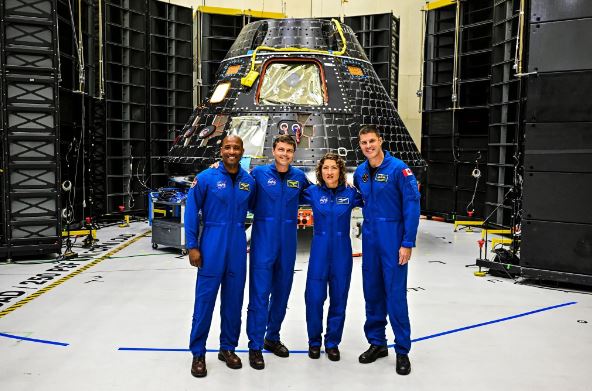In a significant setback to NASA’s plans, officials announced on Tuesday that the Artemis II mission, aiming to send astronauts close to the moon, will be delayed until September 2025. Initially scheduled for late this year, the Artemis II mission will mark the first American venture to approach the moon in over 50 years. The subsequent mission, Artemis III, set to land two astronauts on the moon, is now projected for no earlier than September 2026.
Artemis II holds historical significance as the inaugural mission utilizing NASA’s Space Launch System rocket and Orion capsule to send astronauts into space. The decision to postpone the mission is attributed to various technical issues, including concerns about the life support system’s electronics inside the Orion capsule, ongoing analysis of the capsule’s heat shield wear and tear, and necessary repairs to the launch tower.
During a news conference, NASA Administrator Bill Nelson emphasized the agency’s commitment to safety, stating, “We don’t fly until it’s ready.” The technical challenges identified, especially regarding the valves in the Orion capsule’s life support system, have prompted NASA officials to prioritize crew safety.
Amit Kshatriya, Deputy Associate Administrator overseeing NASA’s Moon to Mars program, highlighted the discovery of valve problems as a primary reason for delaying Artemis II. Valves intended for Artemis III failed tests, leading to a detailed reevaluation of the associated circuit. Although the valves for Artemis II had initially passed tests and were installed, subsequent scrutiny deemed the hardware unacceptable, necessitating replacement to ensure crew safety.
Another concern raised by NASA pertains to a potential deficiency in Orion’s batteries, specifically if the spacecraft needs to swiftly separate from the rocket during an emergency. These findings, coupled with ongoing evaluations, contributed to the decision to postpone Artemis II.
The Artemis program, initiated in December 2017, received direction from President Trump to return astronauts to the moon, deviating from the earlier focus on new destinations such as Mars under President Obama. The timeline for lunar return initially aimed for at least 2028 but faced acceleration in 2019, with Vice President Mike Pence declaring a goal for American astronauts to walk on the moon again by the end of 2024.
The Artemis program, named after the Greek mythology figure and twin sister of Apollo, gained momentum with the hiring of SpaceX, Elon Musk’s company, to build the lander for Artemis III in 2021. However, NASA’s accelerated schedule experienced delays, with Artemis I, a test launch of the Space Launch System rocket, launching in November 2022 instead of late 2020.
Despite budget increases for NASA in recent years, the agency’s slice of the federal budget remains smaller than during the Apollo program in the 1960s. The Government Accountability Office expressed skepticism in December 2025 being a viable target for Artemis III, citing overly optimistic schedules for SpaceX’s Starship lunar lander development and spacesuit manufacturing.
The latest delay provides additional time for SpaceX to address challenges in developing Starship, a crucial component for future lunar missions. The revised Artemis schedule aims to address potential unknowns realistically, with James Free, NASA’s associate administrator, emphasizing efforts to set a feasible plan in place.
While Artemis II’s delay is a setback, NASA continues its lunar exploration efforts, with a recent launch of the commercial robotic lunar lander, Peregrine, carrying NASA experiments. Despite a propulsion system failure, this setback is unlikely to affect the Artemis timeline.
However, Astrobotic Technology’s announcement of a propellant leak and potential loss of Peregrine’s ability for a soft landing on the moon adds a layer of uncertainty to NASA’s lunar studies. As NASA forges ahead with commercial partnerships and scientific research on the moon, challenges and setbacks are expected in the quest for renewed lunar exploration.

